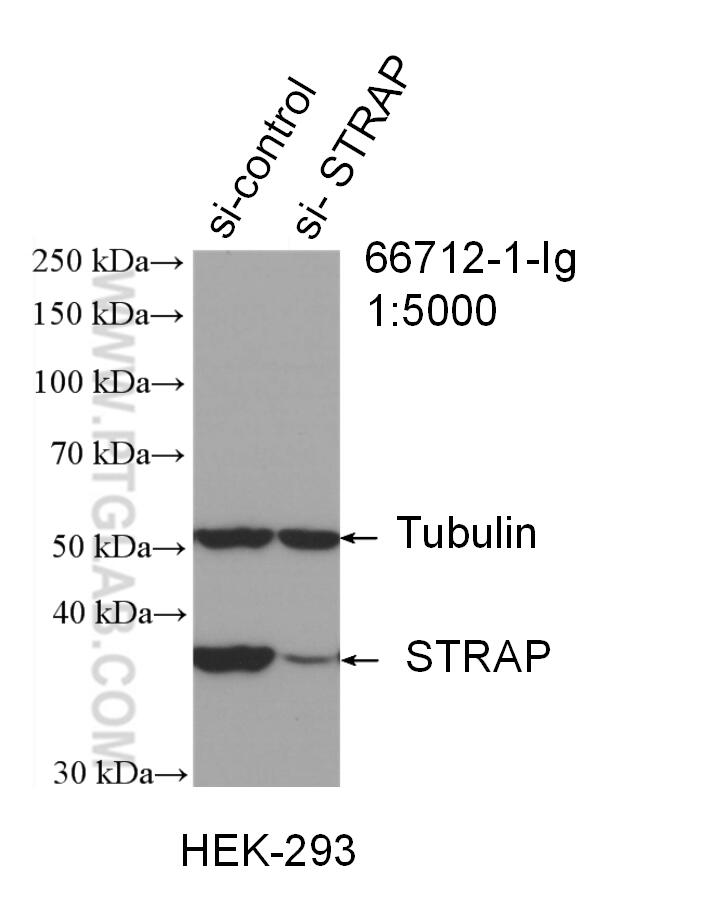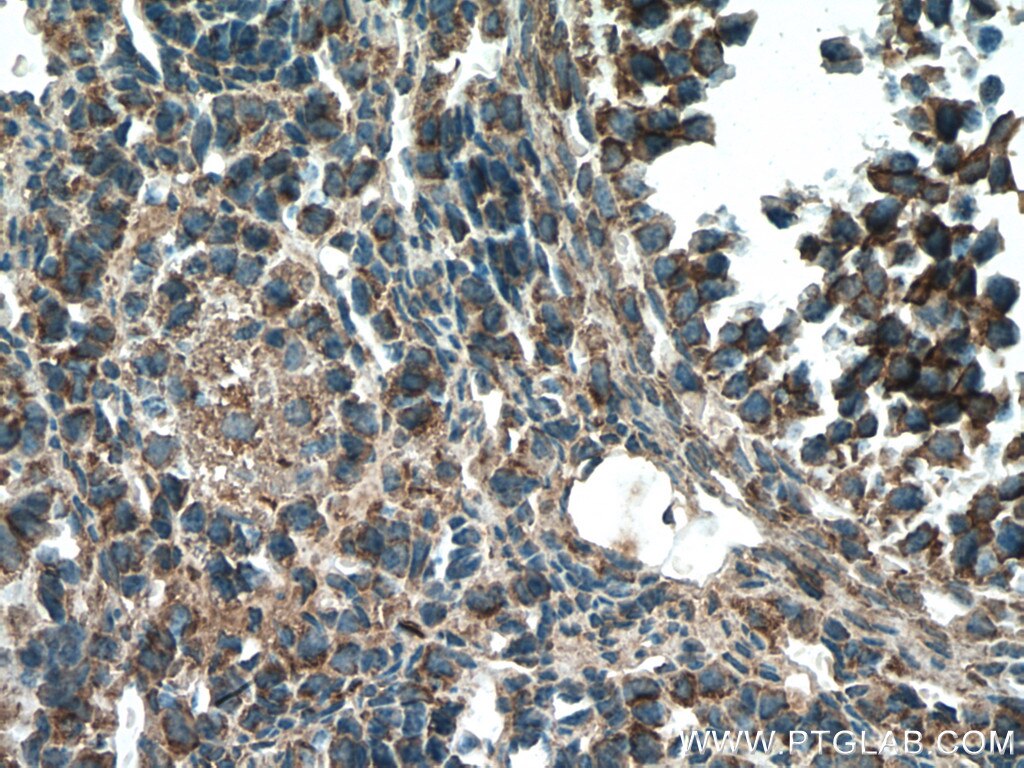- Phare
- Validé par KD/KO
Anticorps Monoclonal anti-STRAP
STRAP Monoclonal Antibody for WB, IHC, IF/ICC, Indirect ELISA
Hôte / Isotype
Mouse / IgG1
Réactivité testée
Humain, rat, souris
Applications
WB, IHC, IF/ICC, Indirect ELISA
Conjugaison
Non conjugué
CloneNo.
5E11F3
N° de cat : 66712-1-PBS
Synonymes
Galerie de données de validation
Informations sur le produit
66712-1-PBS cible STRAP dans les applications de WB, IHC, IF/ICC, Indirect ELISA et montre une réactivité avec des échantillons Humain, rat, souris
| Réactivité | Humain, rat, souris |
| Hôte / Isotype | Mouse / IgG1 |
| Clonalité | Monoclonal |
| Type | Anticorps |
| Immunogène | STRAP Protéine recombinante Ag13085 |
| Nom complet | serine/threonine kinase receptor associated protein |
| Masse moléculaire calculée | 38 kDa |
| Poids moléculaire observé | 38 kDa |
| Numéro d’acquisition GenBank | BC000162 |
| Symbole du gène | STRAP |
| Identification du gène (NCBI) | 11171 |
| Conjugaison | Non conjugué |
| Forme | Liquide |
| Méthode de purification | Purification par protéine G |
| Tampon de stockage | PBS only |
| Conditions de stockage | Store at -80°C. 20ul contiennent 0,1% de BSA. |
Informations générales
STRAP (Serine-threonine kinase receptor-associated protein), also known as MAWD, is a ubiquitous WD40 domain protein, common function of which is to provide a suitable scaffold for coordinating multiprotein complex assemblies and thus, regulate a variety of cellular processes like signal transduction, transcriptional regulation, programmed cell death and so on. STRAP plays a role in the cellular distribution of the SMN complex, which is essential for spliceosomal snRNP assembly in the cytoplasm. STRAP inhibits transforming growth factor-beta (TGF-beta) signaling and enhances tumorigenicity via TGF-beta-dependent and -independent mechanisms. STRAP is up-regulated in several cancers and functions as an oncogene. STRAP imparts oncogenic characteristics to cells by promoting ERK and pRb phosphorylation. Moreover, STRAP regulates c-Jun stability by decreasing the ubiquitylation and proteosomal degradation of c-Jun.











